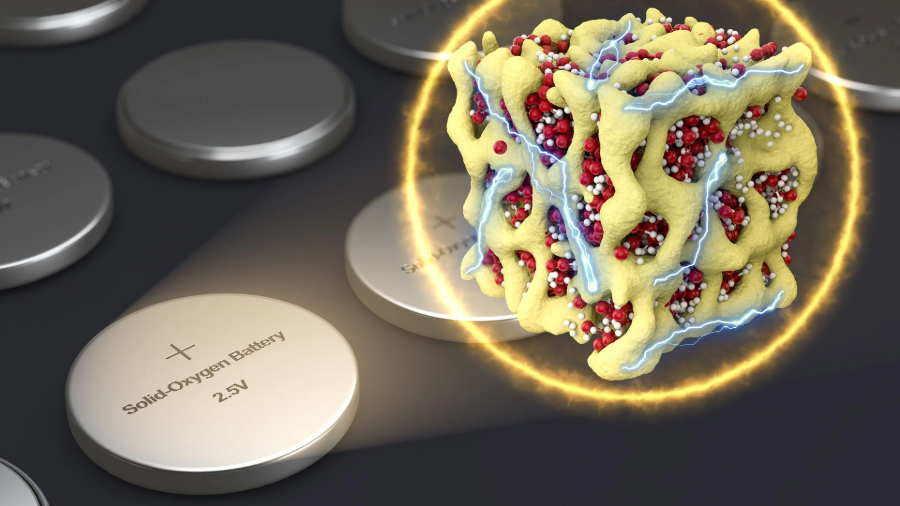New Oxygen-Ion Battery
The global community is currently facing a pivotal moment in the shift towards the adoption of sustainable energy sources. Researchers are actively engaged in enhancing and substituting current technologies as the need for energy storage continues to increase. The development of oxygen-ion batteries is a highly promising advancement that has the potential to supplant lithium-ion batteries in the realm of large-scale energy storage. This blog article aims to provide an in-depth analysis of oxygen-ion batteries, encompassing their operational mechanisms, benefits, ongoing research and development efforts, prospective applications, and the consequential consequences for the future of sustainable energy.
Understanding Oxygen-Ion Batteries
Electron-ion batteries signify an unprecedented domain within the realm of energy storage technology. These batteries operate on the principle of oxygen ion mobility as charge carriers, in contrast to conventional lithium-ion batteries which rely on lithium ions. Analogous to lithium-ion batteries, oxygen-ion batteries consist of a cathode, an anode, and an electrolyte as their primary components. However, the materials and electrochemical reactions underpinning these components are quite dissimilar.
The Core Working Principle:
- Cathode: Metal oxides, such as Lanthanum Strontium Manganite (LSM), are commonly employed for the cathode of oxygen-ion batteries. These oxides possess the ability to both release and absorb oxygen ions (O2). Because of discharge, oxygen ions are discharged from the cathode.
- Anode: Distinguishing itself from conventional lithium-ion batteries, the anode is composed of a substance that readily absorbs oxygen ions throughout the charging procedure. A frequently utilized material for the anode is ceria (CeO2).
- Electrolyte: Solid-state materials are frequently used as the electrolyte in oxygen-ion batteries, facilitating the flow of oxygen ions from the cathode to the anode. Critical in nature, this component differentiates oxygen-ion batteries from their lithium-ion counterparts, which conventionally employ liquid electrolytes.
Advantages of Oxygen-Ion Batteries
- Oxygen-ion batteries exhibit the capacity to attain greater energy densities than lithium-ion batteries, thereby facilitating the storage of a greater quantity of energy within an equivalent volume of space.
- Fireproof: The utilization of solid-state materials as electrolytes eradicate the potential hazards of thermal runaway and fire that are linked to certain lithium-ion batteries, thereby augmenting safety measures.
- Proximate Resources: Oxygen-ion battery components, including ceria and specific metal oxides, are abundant and relatively inexpensive in comparison to the lithium resources necessary for lithium-ion batteries.
- Extended Cycle Life: The prolonged cycle life of oxygen-ion batteries renders them well-suited for applications that necessitate substantial numbers of charge and discharge cycles.
Research and Development
Numerous scientists and engineers are devoted to the development of oxygen-ion batteries to conquer obstacles and optimize this technology. A few of the most important areas of emphasis in research and development are:
- Electrolyte Design: Researchers are investigating diverse solid-state electrolyte structures and materials to increase ion conductivity, thereby enhancing oxygen-ion batteries’ overall performance.
- Cathode and Anode Materials: The fabrication and evaluation of innovative cathode and anode materials to identify those that are both stable and efficient for use in oxygen-ion batteries.
- Enhancing Production Capacity: A significant obstacle lies in the expansion of oxygen-ion battery manufacturing to accommodate the requirements of energy storage on a large scale. Investigating methods of production that are economical are researchers.
- Safety Testing: The process of verifying the integrity of oxygen-ion batteries across a range of circumstances, encompassing severe temperatures and mechanical strain.
Applications of Oxygen-Ion Batteries
Oxygen-ion batteries could be used for a lot of different things and could completely change how we store and use energy. These batteries could make a big difference in the following areas:
- Energy Storage in the Grid: Huge oxygen-ion batteries could be used to store extra energy from renewable sources like solar and wind for use when demand is high or when renewable energy production is low.
- Electric Vehicles (EVs): Oxygen-ion batteries could be used in EVs because they can provide longer driving ranges and faster charge times.
- Residential Energy Storage: Oxygen-ion batteries could be used by homeowners to store extra solar energy and use less energy from the grid, which would save them money on energy costs.
- Aerospace: Because they can hold a lot of energy and are safe, oxygen-ion batteries could be used in aircraft and satellites.
The Future of Renewable Energy
Oxygen-ion batteries have the potential to significantly alter the trajectory of the renewable energy industry. As the globe searches for greener, more long-lasting power sources, affordable and efficient energy storage is more important than ever. The use of oxygen-ion batteries is a promising step in the direction of realizing these objectives.
Challenges and Considerations
Although oxygen-ion batteries show great potential, there exist certain problems and issues that necessitate attention before their general use.
- The current stage of development for oxygen-ion batteries is mostly focused on research and development, necessitating more refinement to achieve commercial feasibility.
- The issue of scalability is a considerable obstacle that needs to be addressed to accommodate the requirements of extensive energy storage.
- Safety and reliability are of paramount importance in the broad use of oxygen-ion batteries, as they must be able to perform consistently and securely across different environmental conditions.
Conclusion
The emergence of oxygen-ion batteries represents a notable progression within the realm of energy storage. In the pursuit of transitioning towards sustainable and clean energy sources, the emergence of oxygen-ion batteries holds significant potential in facilitating the realization of this shift. Despite the existence of certain obstacles, the prospective advantages associated with oxygen-ion batteries, such as enhanced energy density, improved safety measures, and enhanced cost efficiency, render this technology worthy of close attention. In the foreseeable future, there is a possibility that these batteries will supplant lithium-ion alternatives in the realm of large-scale energy storage, thereby making a substantial contribution towards a more environmentally friendly and sustainable global landscape.
Source

